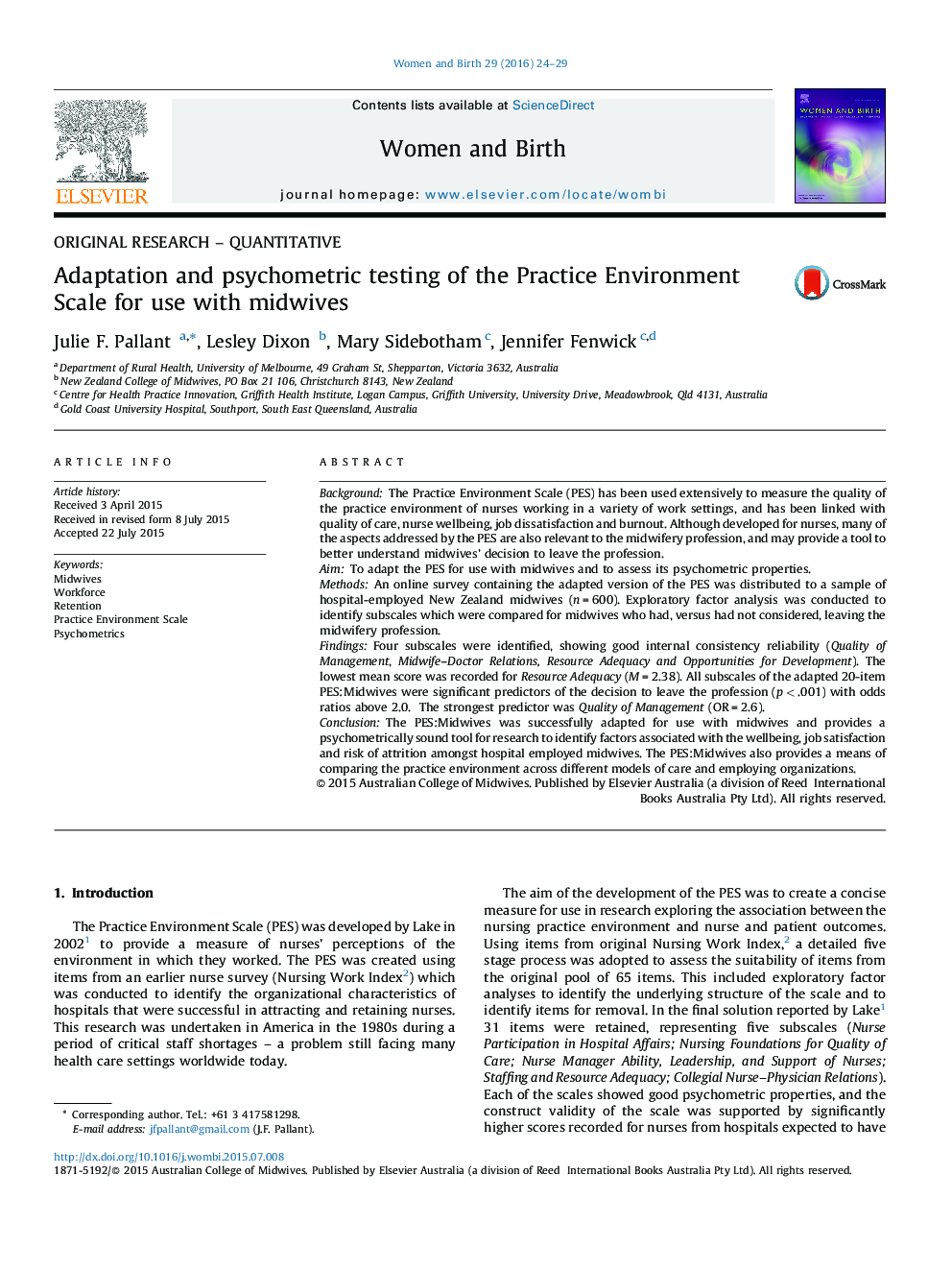| Article ID | Journal | Published Year | Pages | File Type |
|---|---|---|---|---|
| 2636435 | Women and Birth | 2016 | 6 Pages |
BackgroundThe Practice Environment Scale (PES) has been used extensively to measure the quality of the practice environment of nurses working in a variety of work settings, and has been linked with quality of care, nurse wellbeing, job dissatisfaction and burnout. Although developed for nurses, many of the aspects addressed by the PES are also relevant to the midwifery profession, and may provide a tool to better understand midwives’ decision to leave the profession.AimTo adapt the PES for use with midwives and to assess its psychometric properties.MethodsAn online survey containing the adapted version of the PES was distributed to a sample of hospital-employed New Zealand midwives (n = 600). Exploratory factor analysis was conducted to identify subscales which were compared for midwives who had, versus had not considered, leaving the midwifery profession.FindingsFour subscales were identified, showing good internal consistency reliability (Quality of Management, Midwife–Doctor Relations, Resource Adequacy and Opportunities for Development). The lowest mean score was recorded for Resource Adequacy (M = 2.38). All subscales of the adapted 20-item PES:Midwives were significant predictors of the decision to leave the profession (p < .001) with odds ratios above 2.0. The strongest predictor was Quality of Management (OR = 2.6).ConclusionThe PES:Midwives was successfully adapted for use with midwives and provides a psychometrically sound tool for research to identify factors associated with the wellbeing, job satisfaction and risk of attrition amongst hospital employed midwives. The PES:Midwives also provides a means of comparing the practice environment across different models of care and employing organizations.
